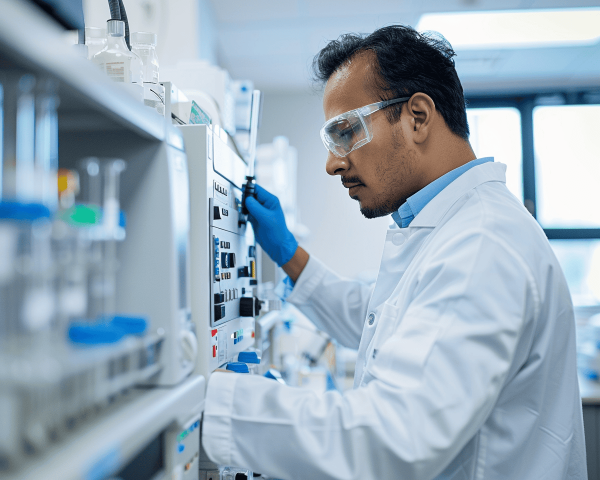
Preparing for HPLC (High-Performance Liquid Chromatography) standards can seem daunting, but it’s essential for ensuring accurate and reliable results. Here’s a detailed guide on how to prepare effectively, written in a conversational tone to make the process as straightforward as possible.
Introduction
HPLC is a powerful technique in analytical chemistry used to separate, identify, and quantify each component in a mixture. Whether you’re a seasoned chemist or a newbie in the lab, preparing for HPLC standards correctly is crucial for obtaining high-quality results. Let’s dive into the steps you need to take to ensure you’re ready.
Answer Section
To prepare for HPLC standards, ensure you have high-purity solvents, accurately weigh your standards, use clean glassware, and follow a strict preparation protocol to maintain consistency and reliability.
Detailed Content Section
Understanding HPLC Standards
What Are HPLC Standards?
HPLC standards are reference materials used to calibrate your HPLC system. They ensure your system produces accurate and reliable data by providing a benchmark for comparison. Think of them as the quality control checks in your experiments.
Choosing the Right Standards
Selecting High-Purity Solvents
When preparing HPLC standards, the purity of your solvents is paramount. Use solvents of the highest purity available. Impurities in solvents can cause baseline noise, peak distortion, and other issues that affect the accuracy of your results.
Accurate Weighing and Dilution
Accurate weighing of your standards is crucial. Use a high-precision balance and ensure your weights are within the tolerance levels specified for your method. Dilute your standards accurately using volumetric flasks to maintain consistency.
Preparation Protocol
Clean Glassware
Always use clean glassware when preparing your standards. Residues from previous experiments can contaminate your standards, leading to erroneous results. Clean your glassware thoroughly with appropriate solvents and ensure it’s dry before use.
Preparation Steps
- Weigh Your Standard: Carefully weigh the amount of standard substance needed for your calibration curve. Use a high-precision balance for accuracy.
- Dissolve in Solvent: Dissolve the weighed standard in a solvent. Ensure the solvent is compatible with your HPLC system and the analyte.
- Transfer to Volumetric Flask: Transfer the solution to a volumetric flask and dilute to the mark with solvent. This step is crucial for maintaining the accuracy of your concentration.
- Mix Well: Mix the solution thoroughly to ensure homogeneity. Use a magnetic stirrer if necessary.
- Filter the Solution: Filter the prepared standard solution through a 0.45 µm filter to remove any particulate matter that could clog the HPLC system.
Tips for Consistency
Consistency is key in HPLC. Here are some tips to ensure you maintain consistency in your standard preparation:
- Use the Same Glassware: Always use the same set of glassware for your standard preparations to minimize variability.
- Prepare Fresh Solutions: Prepare your standard solutions fresh before each use. Degradation over time can lead to inaccurate results.
- Document Everything: Keep a detailed log of your preparation steps, including weights, volumes, and any deviations from the standard protocol.
Storage and Stability
Proper Storage
Store your prepared standards in clean, labeled containers. Use amber glass bottles to protect light-sensitive standards from degradation.
Stability Checks
Regularly check the stability of your standards. Over time, standards can degrade, leading to inaccurate calibration. Run periodic checks to ensure your standards remain stable and effective.
Quality Control
Regular Calibration
Regularly calibrate your HPLC system using your prepared standards. This ensures your system produces consistent and accurate data over time.
Run Blanks
Always run blank samples to check for contamination. Blanks help identify any potential issues with your solvents, glassware, or HPLC system.
Conclusion
Preparing for HPLC standards might seem intricate, but with careful attention to detail, you can ensure accurate and reliable results every time. Remember, consistency is key. Follow these steps, maintain a clean work environment, and regularly check your standards for stability. Happy analyzing!
For more detailed guidelines and best practices, you can visit reputable sources like the American Chemical Society or the United States Pharmacopeia.
References
This guide should provide a comprehensive overview for anyone preparing HPLC standards, ensuring clarity and practical advice throughout. If you have any questions or need further assistance, feel free to reach out.











